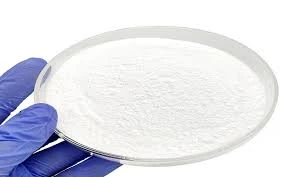What Does a Plasticiser Do?
Plasticisers play a crucial role in the manufacturing and application of various materials, particularly in the production of plastics and polymers. These additives are widely used to enhance the flexibility, workability, and performance of materials, making them indispensable in numerous industries, including construction, automotive, and consumer goods. Understanding the function and importance of plasticisers is vital for anyone involved in materials science, engineering, or manufacturing.
Definition and Function
At its core, a plasticiser is an additive that is blended into a material, typically a polymer, to improve its properties. The primary function of a plasticiser is to increase the plasticity or fluidity of a material. This is achieved by reducing the intermolecular forces between the polymer chains, allowing them to move more freely. As a result, materials become more pliable, softer, and easier to process.
Plasticisers are particularly essential in the production of polyvinyl chloride (PVC), one of the most widely used plastics. Without plasticisers, PVC would be rigid and brittle, unsuitable for many applications. By incorporating plasticisers, manufacturers can produce flexible PVC that is used in various products, such as flooring, pipes, and electrical cables.
Types of Plasticisers
Plasticisers can be categorized into two main types primary and secondary. Primary plasticisers are typically added in larger quantities and have a significant effect on the material's properties. Examples include dioctyl phthalate (DOP) and diisononyl phthalate (DINP). These substances provide substantial flexibility and aid in processing.
Secondary plasticisers, on the other hand, are used in smaller amounts and contribute less significantly to flexibility. They mainly improve the performance of primary plasticisers, enhancing properties such as stability or compatibility with the polymer matrix. Common secondary plasticisers include phosphates and epoxidized vegetable oils.
Mechanism of Action
what does a plasticiser do

The mechanism by which plasticisers work is based on their interaction with the polymer chains. When a plasticiser is added to a polymer, it intercalates between the polymer chains, reducing the density of the material. This lowers the glass transition temperature (Tg) of the polymer, making it remain flexible at lower temperatures. The increased molecular mobility allows for easier processing during manufacturing and improves the end-use performance.
Moreover, plasticisers can also improve other properties of the material, such as impact resistance, elongation at break, and thermal stability. However, the choice of plasticiser can significantly influence these properties, making it essential for manufacturers to select the appropriate type for their specific applications.
Applications
The applications of plasticisers are vast and varied. In the construction industry, flexible PVC is used for window profiles, cables, and flooring materials. The automotive industry relies on plasticisers to provide flexibility in dashboard materials, seals, and hoses. Additionally, consumer products such as soft toys, kitchenware, and medical devices often contain plasticisers to enhance their usability and safety.
Plasticisers are also important in the formulation of adhesives, coatings, and sealants, where flexibility and adhesion properties are essential. As industries evolve towards more sustainable practices, there is an increasing demand for bio-based and non-toxic plasticisers, which further expands the scope of their application.
Environmental and Health Considerations
Despite their benefits, the use of plasticisers, particularly certain phthalates, has raised environmental and health concerns. Some phthalates are classified as endocrine disruptors, leading to regulations on their use in consumer products. As a result, manufacturers are exploring alternative plasticisers that are safer for both human health and the environment.
In conclusion, plasticisers are integral to the versatility and functionality of many materials used today. Their ability to enhance flexibility and processability makes them essential in various applications, from construction to consumer goods. As demand for sustainable and safe materials grows, ongoing research into alternative plasticisers will further shape the future of materials science, ensuring that products remain both functional and environmentally friendly. Understanding the role and implications of plasticisers is therefore critical in navigating the complexities of modern manufacturing and material development.

